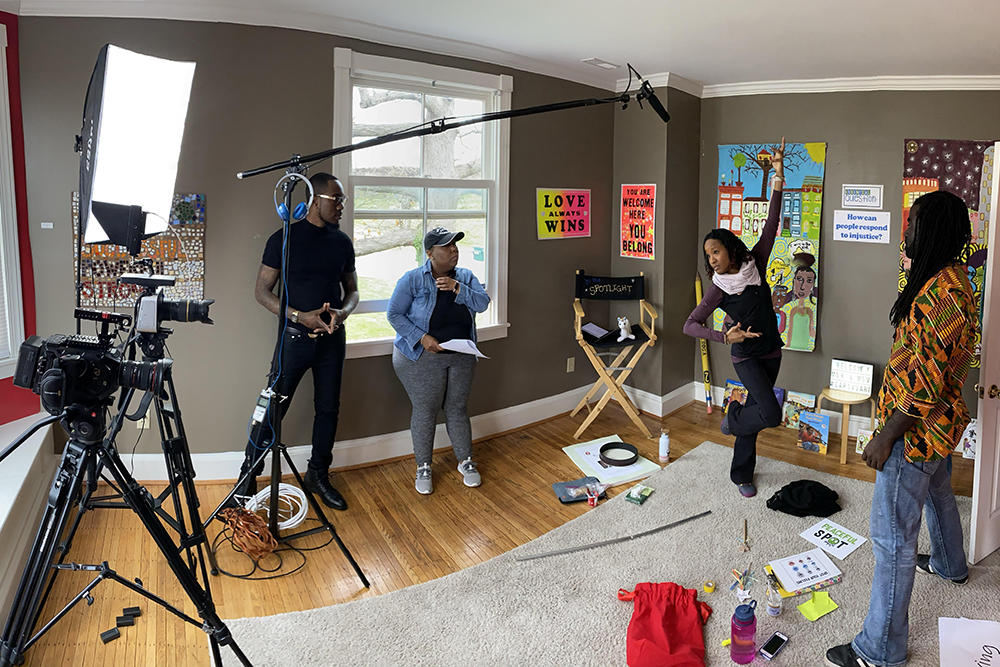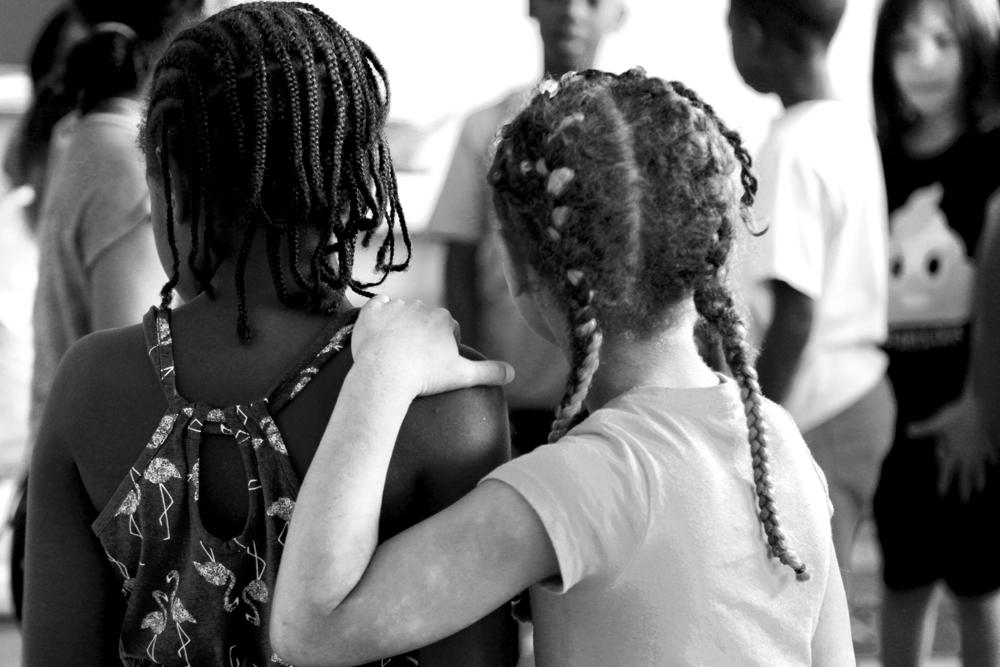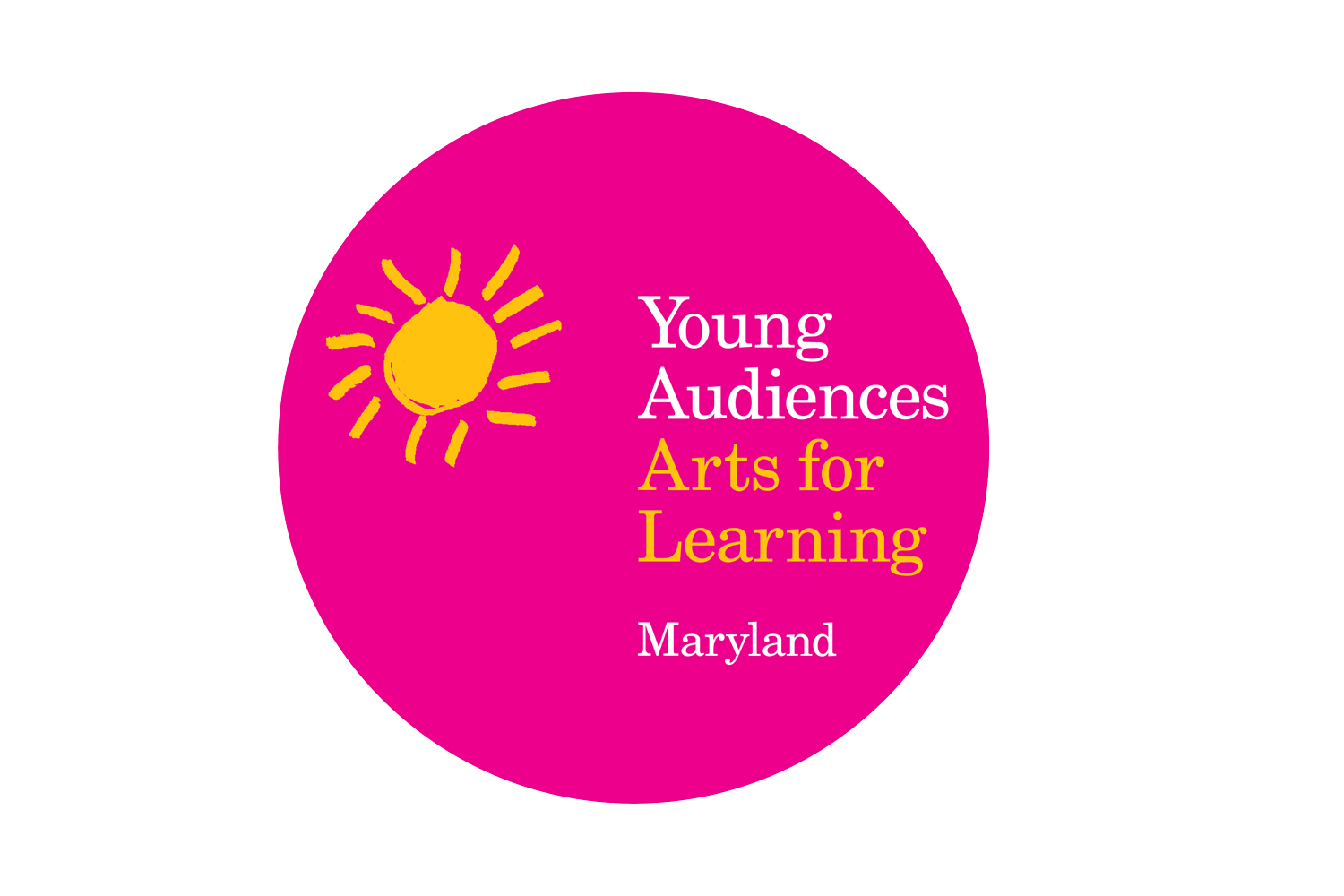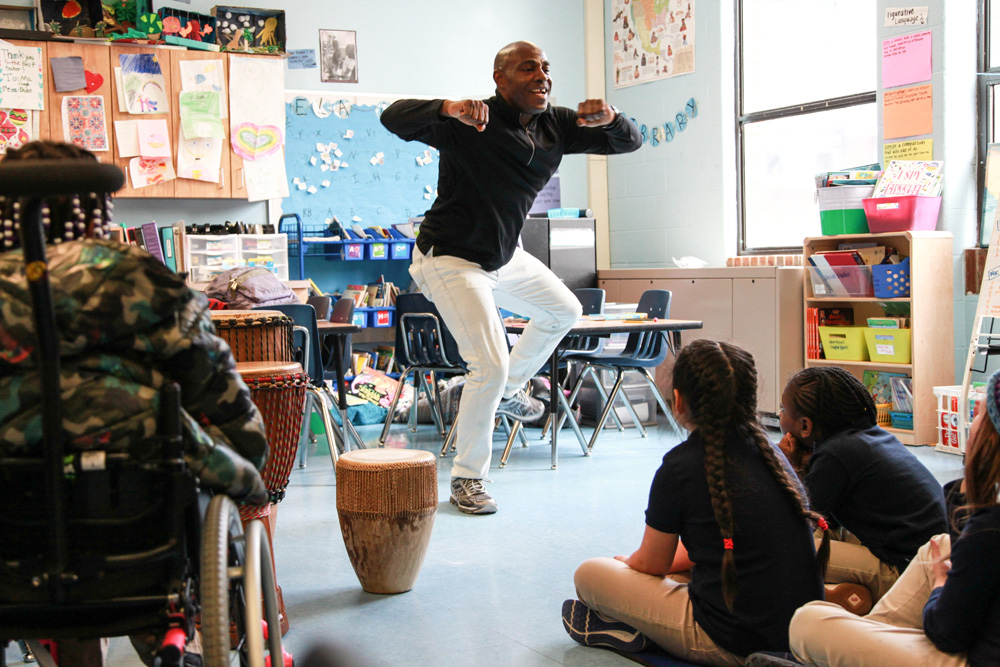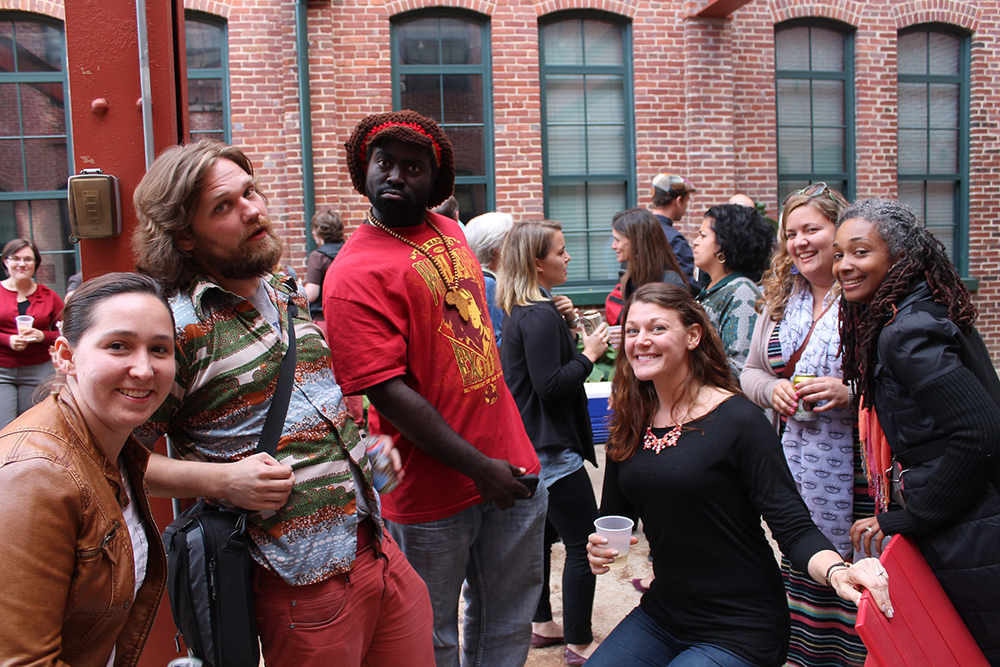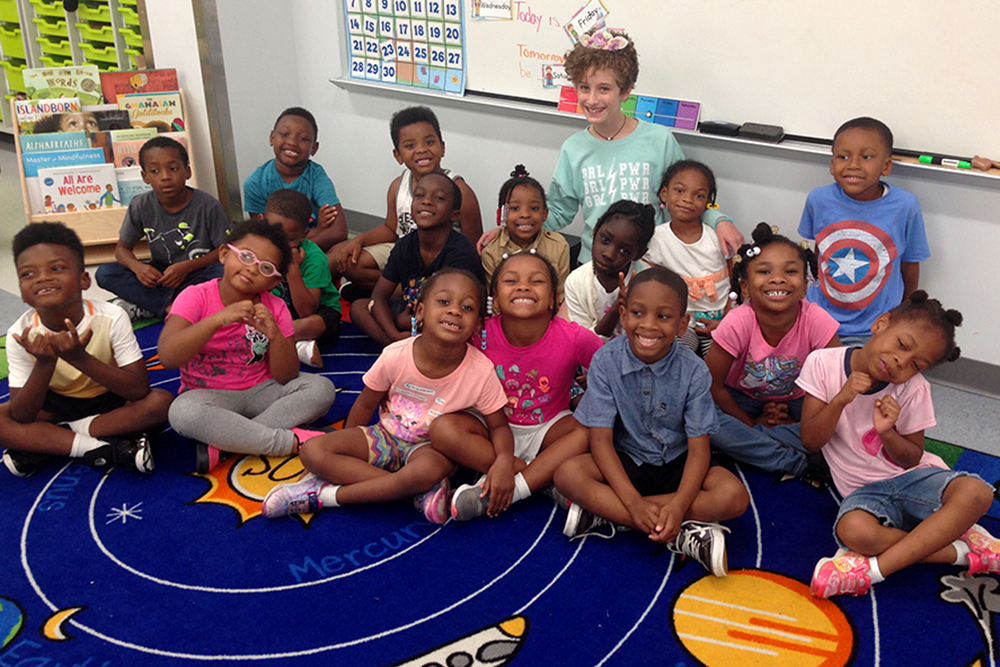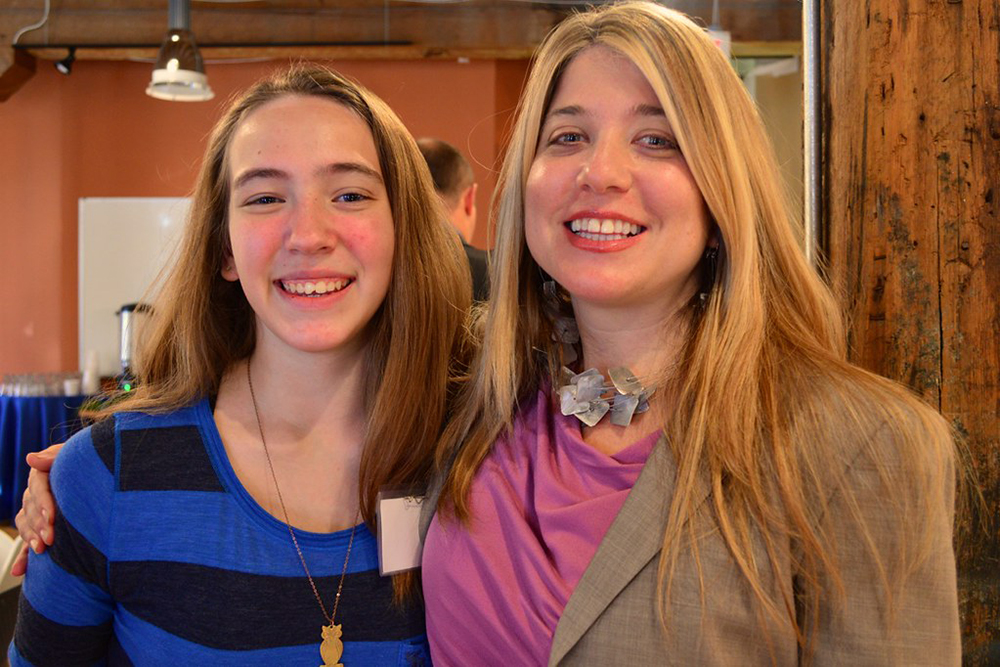Blog
Black Lives Matter
Black lives matter. Young Audiences stands with those fighting for justice in Maryland, Minneapolis, Louisville, and across our country. We honor those who have been murdered and otherwise harmed by our nation’s systemic racism and police brutality.
We recognize that #BlackLivesMatter is a movement, not a moment, and as an organization it is our responsibility to be engaged and stay engaged—both in this powerful moment, and in those that follow. We acknowledge that our organization has benefitted from systems of oppression, and in the fight for racial justice, we must continue to examine and change our own organizational practices and culture.
Artists shape culture. Artists help us to see, understand, and express injustice. And, if we want to build a world that is just—we as a society need to be able to imagine that world. The arts are critical to that.
Knowing that this time, while not new, is extremely challenging for Black people, we wanted to share a Black only healing space that some may be interested in:
- The Healing Hour: On Thursday, June 4, a safe space on Zoom for Black voices to process feelings surrounding black lives lost to police brutality, hosted by a Black clinician Brie Sutton, LGPC
We also want to share some of the organizations and resources that we have found valuable in our learning. The resources below are just some of many resources to explore.
We are committed to continuing to learn. To listen. To question. To be questioned. To respond. To act. We look forward to growing together.
Resources
Organizations:
- WombWork Productions, Inc.
- Baltimore Racial Justice Action
- Leaders of a Beautiful Struggle
- Teacher’s Democracy Project
- The National Black Lives Matter Week of Action in our Schools
- Baltimore Ceasefire
Resources:
- Two Baltimores: The White L vs. the Black Butterfly by Dr. Lawrence Brown
- White people assume niceness is the answer to racial inequality. It’s not.by Robin DiAngelo
- Rethinking Schools: “Racial Justice is not a choice” by Wayne Au
- The Year I Gave Up White Comfort: An Ode to my White “Friends” on Being Better to Black Womxn by Rachel Ricketts
- Filling our Cups: 4 Ways People of Color can Foster Mental Health and Practice Restorative Healing by Threads of Solidarity: WOC Against Racism
- How to Set a Boundary and Survive the Shame and Guilt That Follows by Fat Black Sadistic
Weekends Are for Arts & Learning Kids!
Did you catch Arts & Learning Kids! on Channel 77 this weekend? Young Audiences created this cool educational TV show in partnership with City Schools to reinforce what our students are learning remotely through interactive arts-integrated lessons!
Each episode is geared toward one of three grade bands (PreK/K, 1/2, and 3rd-5th Grades), and features a teacher and professional artist co-teaching an arts-integrated math or literacy lesson in-line with the math and literacy work students are currently doing either virtually or via packets. After each episode airs, it is accessible anytime online at yamd.org/kids.
This is not a passive viewing experience! During each episode, students are challenged to explore learning through a variety of art forms. They’ll learn key math concepts using their whole bodies and voices; write and animate their own myths by creating a flip book; learn basic tap steps to help review fractions; engage in storytelling using an actor’s tools; or even solve math problems with shadow puppets!
In the episode “Character Traits Choreography,” students have the opportunity to identify their own character traits and those of important Civil Rights leaders like Dr. Martin Luther King Jr. and Ruby Bridges. Students will be able to unlock their creativity and communicate those character traits through dance! Learning several elements of dance like frozen poses, levels, shapes and energy, students will not only get to perform the Ruby Bridges choreography, but will be inspired to look for the leaders—particularly those who respond to injustice—in their communities and in themselves, identify character traits of those individuals, and create their own choreography. (This episode is recommended for students in 1st and 2nd Grade)
As a fun bonus, within each episode are two special segments. The “Sweet Stuff Showcase” highlights an engaging and educational digital experience from outside of our own organization. The “Artsplosions” segment features YA artists presenting a cool and quick experience in their art form that often encourages kids to get up and get moving. We are so excited to share Arts & Learning Kids! with you. It really is an AWESOME program and we think that even parents and caregivers will find that it’s super fun to watch. Check it out!
Young Audiences Produces Curriculum-based TV Show To Support Baltimore Students’ Remote Learning
Arts Integration Episodes Will Air Weekly Through Partnership with
Baltimore City Public Schools
BALTIMORE – Young Audiences of Maryland, the Baltimore-based nonprofit delivering arts-integrated learning to Maryland students, is partnering with Baltimore City Public Schools to produce Arts & Learning Kids, a weekly series of TV broadcasts bringing engaging, arts-integrated classroom lessons directly into the homes of students and families while schools are closed.
The Arts & Learning Kids series launches Saturday, April 11 at 10:15am on the City Schools’ Channel 77 and will air every weekend. Multiple curriculum-aligned episodes will be tailored to three grade bands: pre-k/kindergarten, 1st-2nd grade, and 3rd-5th grade. Baltimore City Public Schools is using Channel 77 to deliver educational content to support students and families during school closures. Click here to view the full schedule of programming.
Young Audiences will create new 30-minute episodes every week for all grade bands, starting with four Arts & Learning Kids programs that support Baltimore City Public Schools’ Wit & Wisdom literacy curriculum and Eureka Math curriculum. Each episode will feature a Young Audiences teaching artist and an educator. For example, one episode shows songwriter Mary Fields working with teacher Kevin Older to write song lyrics that help them solve a word problem. In another episode, dancer Valerie Branch partners with educator Kristina Berdan to create choreography connected to the character traits of important civil rights leaders like Ruby Bridges.
The Arts & Learning Kids videos will offer modified versions of the teaching artists’ classroom activities, tailored for students learning at home and incorporating activities that could include their families. Episodes will encourage students to share their creation or performance with Young Audiences, which will make them available on social media and possibly include them in future episodes of Arts & Learning Kids.
Check out one of the first episodes, focused on math:
Teaching artists are professional artists who work with classroom teachers and deliver hands-on, arts-infused learning experiences that support traditional academic content.
Young Audiences suggested the Arts & Learning Kids programs to Baltimore City Public Schools, and is the only provider of education content for City Schools’ Channel 77 programming beyond programming from Great Minds, the DC-based organization which created the Wit & Wisdom and Eureka Math curricula.
“Young Audiences has been a consistent and positive influence in our community and we look forward to continuing our partnership in creative, new ways as we implement the district’s Continuity of Learning plan in response to school closures,” said Janise Lane, Baltimore City Public Schools Executive Director of Teaching and Learning. “The Continuity of Learning plan is designed to continue learning while being as flexible as possible for our families; to continue the connections that matter – between teacher and student, family, and school; and to create a safe and nurturing virtual classroom community where everyone supports each other. To achieve these goals it is vital to provide alternate avenues for learning and connection and The Arts & Learning Kids show is a key component of that effort.”
“Ensuring that students are engaged, learning and connected during this period of school closures is critical,” said Stacie Sanders Evans, President and CEO of Young Audiences of Maryland. “Arts & Learning Kids will provide a consistent place for young people to visit — particularly those that do not have access to the internet for online learning — and to connect with dynamic artists and teachers. There they can explore literacy and math through a variety of art forms and be challenged to share their new knowledge with caregivers and parents who also need an opportunity to express and create.”
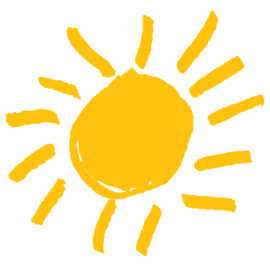
About Young Audiences/Arts for Learning:
Started in Baltimore in 1950, Young Audiences is the nation’s largest arts-in-education provider. As the Maryland affiliate, Young Audiences/Arts for Learning (YA) is devoted to enriching the lives and education of Maryland’s youth through educational and culturally diverse arts programs. Through Young Audiences, professional artists from all disciplines partner with leaders and schools for nearly 10,000 hands-on arts learning experiences that reach more than 190,000 Maryland students. Young Audiences envisions a Maryland where the arts are valued for their capacity to transform lives, and where every student is immersed in opportunities to imagine, to create, and to realize their full potential.
The Power of What If?
Dear Friends,
What if we invested in artists at this time to dream up new ways to teach and reach children?
One of the things I admire about artists is their ability to envision and create without constraint. They inspire me every day to put on my “artist brain” and ask, “What if?” on behalf of young people and their education. This new reality we are operating in has us asking “What if?” often. What if schools remain closed for months? What if a child does not have access to the internet to engage in online learning, and how will that exacerbate the opportunity gap? What if teaching artists, who are primarily independent contractors, are forced to leave their callings for more financial certainty?
In addition to the scary questions, there are also questions that inspire me: What if we used this time to envision new and better ways to close the inspiration gap for young people? And what if we paid artists at this precarious time in their life to dream up new ways to teach and reach children?
Also inspiring me are the 67 donors who have collectively donated more than $14,000 to the Teaching Artist Emergency Fund. This money will be distributed next week to more than 40 artists, who are independent contractors originally contracted to deliver services to public schools around the state that are now closed for another month. In response to my “What if?” question, the YA Board of Directors approved us to draw down $18,500 in organizational reserves to provide innovation grants next week to these same artists.
Why an innovation grant?
In a call last week with our artists, Jamaal “Mr. Root” Collier said, “We create. That is what artists do.” While the circumstances of where and when they create, and how they bring that creativity into a child’s life and education, have changed, they are still artists. This innovation grant is about supporting artists to be the valuable citizens that they are at this important time when we need to “reach and teach” kids in different ways. Artists, like scientists, have the unique ability to imagine new possibilities, the curiosity to experiment, and the courage to try and fail.
So, their charge with this grant? To lift up our students at this time—to breathe joy, creativity, and discovery into their homes. I look forward to sharing the artists’ innovations with you and will pass along examples of their impact on young people.
Now that we know schools will remain closed through most of April, we are paying special attention to the 54 artists who face losing more than $89,000 next month, as well as the tens of thousands of children who could lose access to learning from these amazing artists. Here are five ways we are supporting artists and young people:
- Continuing to provide financial relief by raising money through the Teaching Artist Emergency Fund.
- Drawing down additional reserve funds to provide innovation grants to reach more artists.
- Asking foundations and government agencies to consider relaxing their restrictions on grants to Young Audiences, which will allow us to put artists to work helping kids in a different way.
- Organizing a professional learning community for artists to help them transition quickly to online teaching, and providing them with infrastructure and marketing support.
- Developing our own innovative partnerships with school districts to connect artists with students in ways that focus on addressing the digital divide, and blending academic instruction with moments that nurture emotional well-being and creativity during this stressful time for children and families.
We are about to announce something very exciting…stay tuned!
Sincerely,
Stacie Sanders Evans
President & CEO
COVID-19: An important update from Young Audiences
Dear Friends,
Young Audiences continues to monitor the news around COVID-19 and is actively following the directions of the Maryland Department of Health, Governor Larry Hogan, State Superintendent of Schools Dr. Karen Salmon, the Maryland State Department of Education, and our partners.
The health and safety of our staff, artists, students, teachers, and their families is a top priority.
Starting Monday, March 16, 2020, Young Audiences will temporarily implement a remote work policy. However, a few staff will be in the office carrying out essential operational activities. Although the physical office will be closed for the bulk of the next two weeks, all staff are available remotely during normal business hours, Monday-Friday, 9 am-5 pm. To get in touch with a specific member of our team, we encourage you to use our staff directory.
With the announcement that all public schools in the State of Maryland will be closed until April 24, 2020, we are aware that many programs will need to be rescheduled.
We believe strongly in the power of the arts to lift and empower students, especially during uncertain times such as these. We are also deeply committed to the livelihood of our professional artists, who are facing uncertainty during this time. They are independent contractors and rely on income from programs that now must be postponed to later in the school year. Because of our commitments to students, schools, and teaching artists, our team is dedicated to working closely with each school to reschedule all programs.
Each Maryland county has a dedicated Program Coordinator available to help. If you don’t know who to reach out to, please use our county directory.
We are in communication with our artists and will be hosting two group conversations next week to share information, answer questions, and understand the full scope of artists’ concerns and needs.
Our mission is to integrate the arts into the lives and education of children. And while schools are not open for us to advance our mission in the typical way, we know children, families, and educators could benefit from our support. We remain committed to being mission-oriented every single day—even if it has to be online and virtual. If you are not connected to our Facebook, Instagram, or Twitter pages, but you want to remain connected in our pursuit, please consider following us. On Monday, we will begin sharing arts learning resources and activities that families and educators can use to keep kids engaged in learning.
In the meantime, we encourage everyone to stay informed and utilize the following resources:
For Educators
- Facebook group to support educators who are planning distance or online learning due to school closures for COVID-19
- Education Companies Offering Free Subscriptions due to COVID-19 School Closings
- Coronavirus: Multilingual Resources for Schools
- MSDE Fine Arts Office’s Fine and Performing Arts Resources
For Artists
- COVID-19 & Freelance Artists
- Emergency Medical Grants for Artists
- CERF+ Assistance with intensive medical care due to COVID-19
For Parents and Community
- The Center for Disease Control
- World Health Organization
- Maryland State Department of Education
- Two Free months of internet from Comcast Internet Essentials for qualifying families
- 211: the official Health & Human Service line for Maryland residents in need
- Talking to Teens and Tweens About Coronavirus
- Maryland Unites
For Students
Sincerely,
Stacie Sanders Evans
President & CEO
Young Audiences’ Free Summer Arts & Learning Academy to Expand to Nearly 2,600 Children After Study Shows it Reduces Summer Learning Loss
Arts-integrated program for City Schools students expanding to nine sites in 2020 after program successfully reduced summer learning loss in math
BALTIMORE – Young Audiences’ Summer Arts & Learning Academy–the free, five-week arts integration program for Baltimore City Public School students–will expand in 2020 after new research showed the program successfully reduces summer learning loss in math while supporting writing and social-emotional growth. In 2020, the program will grow to nine sites, reaching nearly 2600 students across Baltimore.
The 2019 Summer Arts & Learning Academy (SALA) was held from July 6 to August 7 at eight sites. Through hands-on activities co-taught by teaching artists and teachers, more than 2,300 Pre K-5th grade students engaged in painting, songwriting, poetry, dance, music, photography, and playwriting while learning math, writing, and literacy.
“Arts education is a vital component of instruction in City Schools because its concepts infuse other key instructional areas such as language arts and mathematics. That combination creates a well-rounded education for our students,” said Dr. Sonja Brookins Santelises, CEO of City Schools. “We are pleased to partner with Young Audiences/Arts for Learning as it enhances its contribution to the arts education of our students. Its work is invaluable in expanding the minds and skillsets of our students.”
Research from Baltimore City Public Schools and evaluation firm WolfBrown showed that the infusion of the arts into traditional learning content transformed the classroom experience, resulting in academic gains for students. Baltimore City Public Schools analyzes student performance on the i-Ready math assessment, taken at the end and beginning of each school year to gauge summer learning loss. Results showed that SALA attendees had significantly less summer learning loss in i-Ready math compared to BCPSS students who did not attend the program. The district evaluation also highlighted YA as the most cost-efficient elementary program with the highest rates of enrollment and attendance.
WolfBrown, a national leader in research on arts education and children’s development, partnered with Young Audiences to analyze the 2019 SALA results and reported significant academic gains–an average of 20% growth–in third-fifth grade writing scores on pre-and-post program testing. WolfBrown also found that students attending SALA for two years showed no summer learning loss in math. Rather, these students experienced academic gains when returning to school, growing their i-Ready scores by nearly three percentile ranks.
WolfBrown’s findings showed that while all kids can benefit from the program, students who are furthest behind academically can benefit the most. Students (grades 3-5) entering the program two grade levels below grade level saw no summer learning loss in reading as measured by i-Ready. In fact, these students grew by two percentile ranks when returning to school in the Fall.
With Baltimore City Public Schools prioritizing whole child education, Young Audiences (YA) partnered with WolfBrown to develop and pilot an observation tool last summer that spans from emotional support and social climate to academic knowledge and arts integration. The framework is based on what research shows matters in a learning environment–and it may ultimately help YA and City Schools better understand why this program works. Observers scored SALA particularly high in classroom climate, teacher sensitivity, ability to develop math skills in students, co-teaching, and differentiated literacy instruction.
“Arts education is a vital component of instruction in City Schools because its concepts infuse other key instructional areas such as language arts and mathematics. That combination creates a well-rounded education for our students,” said Dr. Sonja Brookins Santelises, CEO of City Schools. “We are pleased to partner with Young Audiences/Arts for Learning as it enhances its contribution to the arts education of our students. Its work is invaluable in expanding the minds and skillsets of our students.”
“We are thrilled that City Schools is choosing to partner with Young Audiences to expand this program to more children in summer 2020,” said Stacie Sanders Evans, Young Audiences President & CEO. “We also love that City Schools is committed to the whole child, making sure kids have opportunities to develop personally, creatively, and academically over the summer.”
Registration for the 2020 Summer Arts & Learning Academy will open on Tuesday, March 3, with the program running from July 6 to August 7. Host sites include Arundel Elementary Middle School, Elmer A. Henderson-Hopkins, Dorothy I. Height Elementary School, Gardenville Elementary School, Beechfield Elementary Middle School, James McHenry Elementary School, Pimlico Elementary/Middle School, Wildwood Elementary/Middle School, and Graceland Park-O’Donnell Heights Elementary School. Find registration and more information at yamd.org/programs/summer-arts-academy.
View the full Baltimore City Public Schools Summer Evaluation
View the full WolfBrown SALA Evaluation

About Young Audiences/Arts for Learning:
Started in Baltimore in 1950, Young Audiences is the nation’s largest arts-in-education provider. As the Maryland affiliate, Young Audiences/Arts for Learning (YA) is devoted to enriching the lives and education of Maryland’s youth through educational and culturally diverse arts programs. Through Young Audiences, professional artists from all disciplines partner with leaders and schools for nearly 10,000 hands-on arts learning experiences that reach more than 190,000 Maryland students. Young Audiences envisions a Maryland where the arts are valued for their capacity to transform lives, and where every student is immersed in opportunities to imagine, to create, and to realize their full potential.
Access for All Awards Granted
We know that students who have regular access to arts opportunities outperform their peers in virtually every measure. And thanks to generous donors, Young Audiences’ artists and programs are available to high-need Baltimore City Public Schools at up to 80% off of the cost through the Access for All Initiative! This opportunity helps principals with limited resources provide hands-on learning in the arts that not only supplements and enriches the curriculum, but sparks energy and joy throughout entire classrooms.
The first two rounds of Access for All awards for the 2019-20 school year have been granted and 15 principals are already able to take advantage of everything an artist can bring to expand students’ experience and learning in the classroom! Congratulations to the following Baltimore City Public Schools:
- Gardenville Elementary School
- Harlem Park Elementary/Middle School
- Bard High School Early College
- Arundel Elementary/Middle School
- Digital Harbor High School
- Baltimore International Academy
- Liberty Elementary School
- James McHenry Elementary/Middle School
- Bay Brook Elementary/Middle School
- Margaret Brent Elementary/Middle School
- Hamilton Elementary/Middle School
- Cecil Elementary School
- Gwynns Falls Elementary School
- Liberty Elementary School
- City Neighbors Charter School
Through Access for All, students at these schools are working in their own classrooms with professional teaching artists like Bomani, Amanda Pellerin, Christina Delgado, Ssuuna, Katherine Dilworth, Baltimore Improv Group, Max Bent, John Iampieri, and Rockcreek Steel Drums. Students’ ears and eyes will open even wider when treated to energetic and inspirational assemblies from ensembles like WombWork Productions, Inc., Illstyle and Peace Productions, Mark Lohr, and Milkshake!

And experiences like these—dynamic and engaging performances and learning through new art forms—are what make school fun, make problem-solving exciting, make learning memorable, and make lessons stick.
Our Spring Access for All deadline is Friday, February 14, 2020. Apply online now. Arts Every Day Schools: Arts Every Day funds CAN be used to pay the 20% match for an Access for All program! Visit yamd.org/grants to learn more.
#GivingArts4Learning: Micaela’s Story
Our staff at Young Audiences do not just come to work. We come to support a mission: to transform the lives and education of our youth through the arts by connecting educators, professional artists, and communities. And we come with our hearts and minds and bodies ready to go above and beyond to realize this mission.
Micaela wrote, “When I started at Young Audiences six years ago, I thought we needed the arts to help students be more engaged in school and make learning more accessible. I had just been a teacher, and I saw changes in my students when they worked in the arts—new leaders emerged when we did a class talent show, and huge smiles appeared on kids’ faces when they got “their own” recorders to take home from music class.
We need young people who not only have the skills needed to build a better world, but can imagine what that might look like. Artists in schools seems like one of our best shots at giving kids the space and community to become the wild, imaginative thinkers and doers that we all need.
These things are still true—the arts are awesome at engaging kids in school, providing an opportunity for students to do hands on work that is meaningful, visible, and matters. And, they spark joy in kids!
Today, though, I think there is more that I didn’t realize a few years ago. I think we need imagination in volume and degrees beyond what I understand. We need young people who not only have the skills needed to build a better world, but can imagine what that might look like. Artists in schools seems like one of our best shots at giving kids the space and community to become the wild, imaginative thinkers and doers that we all need.”
#GivingArts4Learning: Femi’s Story
Our artists know how to use their art form to draw kids into the work, to get students to challenge and surprise themselves and proudly show off their achievements. They see how arts integration engages and motivates even the most reluctant students.
Spoken Word Artist Femi the Drifish told us, ”I was working with 7th graders at Commodore John Rodgers Elementary/Middle doing an arts integration math program using rhythm, rhyme, and poetry. Going through what is common in a classroom, I challenged the students to use their algebra vocabulary to describe the city of Baltimore using the terms in creative ways—metaphorically, but in correct context.
There was one student, clearly the “too cool for school” type, who just wasn’t participating in any activity that led up to the final writing exercise. Once the scaffolding was completed and students were set to complete their assigned writing prompt, I witnessed that one kid scribbling on paper in the corner by his lonesome, away from tables where students where gathered.
Upon completion, students shared their work trying to impress each other with the cleverness of their vocabulary usage in the Baltimore City descriptive poems, when he asked if he could share his poem.
I was surprised—just like his teacher and his class peers—and quickly encouraged him to step up to the front of the class to present before he decided to retreat into the disinterested facade he used during all the warmups. As he delivered the poem I realized that he didn’t stick to the theme given, but instead described his love for the game of football using the math terms.
The class roared on cheers upon his completion and the teacher grabbed the poem from him to share with other teachers who wandered into the class to congratulate him.”
#GivingArts4Learning: Shannon’s Story
Alice’s year at Summer Arts & Learning Academy (SALA) meant so much to her. The program helped bring clarity to math concepts my daughter was struggling with through an art form she loves, she felt confident, and she felt like she was part of something larger than herself. It made her feel proud of herself and proud of her community.
She wrote, “A lot of people think of Baltimore as how the news shows and talks about it. The news tends to only show the little bad things about us. I wish people could just see what SALA is like. It’s a perfect representation of Baltimore’s youth! It shows that we are creative, compassionate, caring, and loyal.” Now Rosario, my youngest daughter, looks forward to SALA every summer. And even though Alice is too old to attend, she volunteers in the program. “I can help and watch other children get the same great experience that I did.”
As I’ve seen with my own children, arts integration is not just fun in the moment. These are experiences that shape students’ mindsets, their education, their goals—experiences that students carry with them and inform their decisions for years to come. Please give today.
#GivingArts4Learning: Barbara’s Story
I have been a volunteer for Young Audiences for seven years now, ever since discovering them when Colette was in 10th grade, and was asked to speak at their Impact Breakfast. I learned then how much YA had already impacted her, as Colette was part of the PVA (Performing and Visual Arts) magnet at school. Teaching artists from YA were very active, and still are, with the PVA in Anne Arundel County.
But what really impressed me was YA’s involvement at all grade levels and in so many schools across Maryland. By integrating the arts into core curriculum, kids learn in a way that helps them retain the information. Whether it’s rapping their multiplication tables, dancing to showcase literature themes or creating mosaics to depict basic biology, the kids are learning because they’re HAVING FUN!
As for Colette, she’s finishing her senior year at East Carolina University, as an electrical engineer. And she still benefits from the arts-integrated education she has received. For example, although I may not comprehend the mathematical formulas in the papers I proofread for her, her PowerPoint presentations are so visually pleasing that I don’t mind reading what I don’t understand! Seriously, I hope you’ll consider donating today so that other kids can have the great experiences and training that she received as part of YA’s arts-integrated education techniques.
#GivingArts4Learning: Alex’s Story
Young Audiences has played a pivotal role in Alex’s life, both past and present. As a child, he discovered his love of writing during a YA artist residency in his public elementary school. Nearly two decades later he works as a staff member with Young Audiences of Maryland.
He wrote “As an adult who was diagnosed with a learning disorder later in life, I can look back and say that my experience with YA was a turning point in my journey to know and love myself. When I had the chance to demonstrate my understanding by creating, rather than just consuming information, I found myself not only participating in class but thriving! I want to stress how much even a single experience can expand a young person’s horizons of possibility, both for their education and their future.”
Now, Alex coordinates YA’s programming with schools in Prince George’s, St. Mary’s and Calvert County and writes fiction and poetry as well. “It brings me great joy to step into a school and know that a student will find a lifelong sense of meaning and passion because of our work.”
Alex is an example of the power of arts integration in the life of our students, especially those who struggle to learn through traditional means. He is proud to “pay it forward” as a staff member and encourages you to support our work across the state of Maryland. Please give today.










